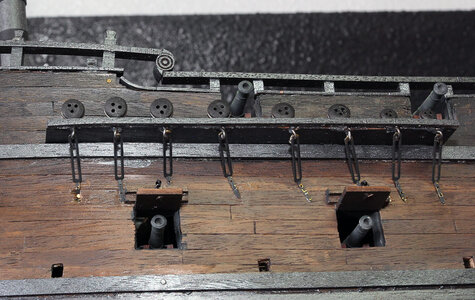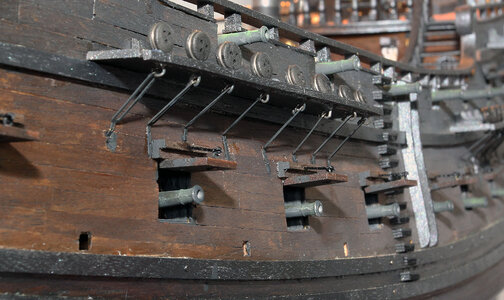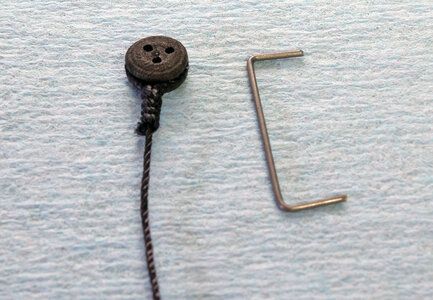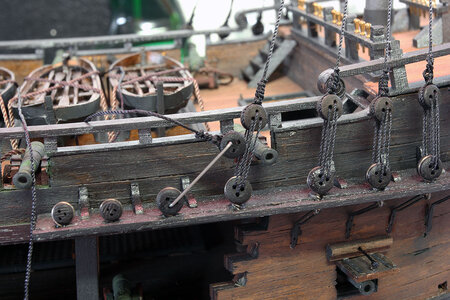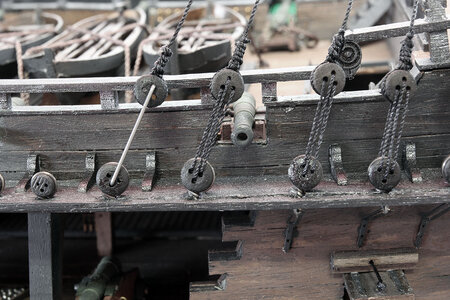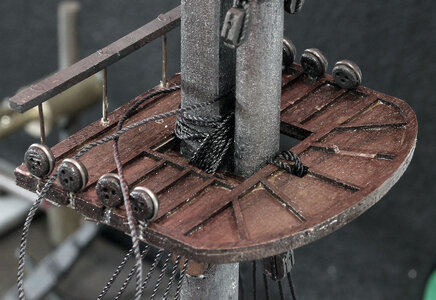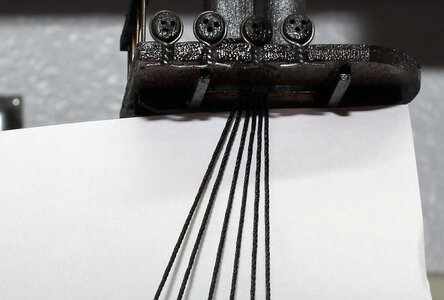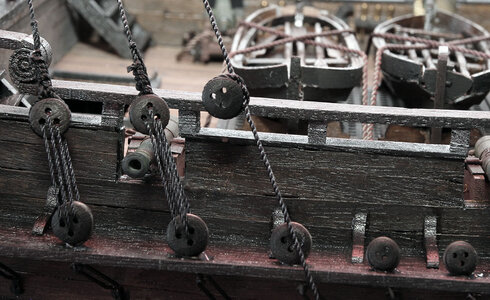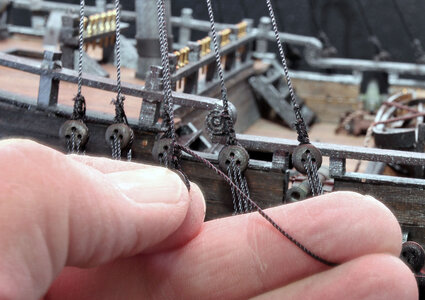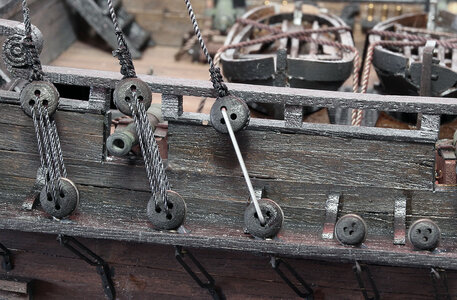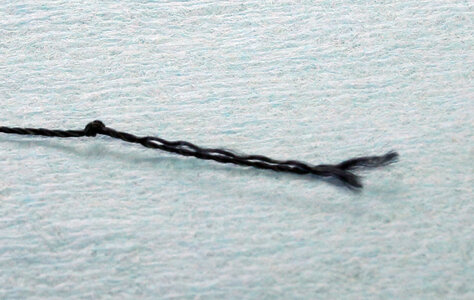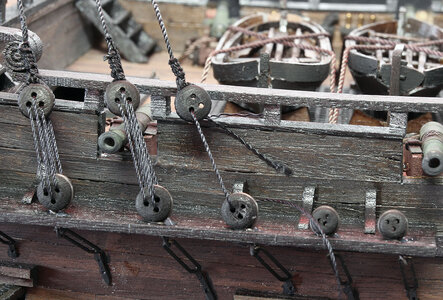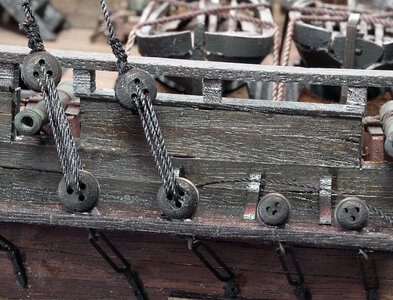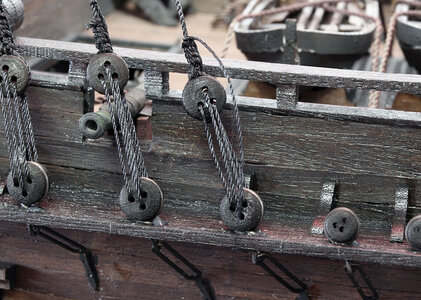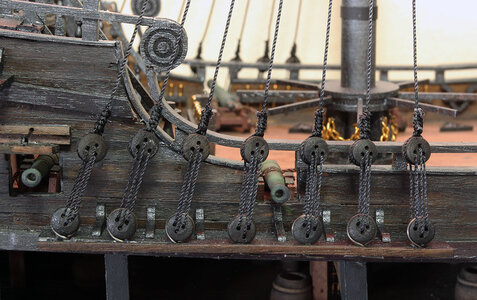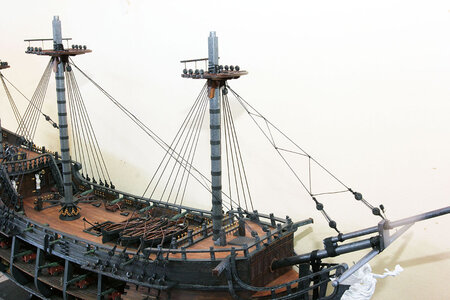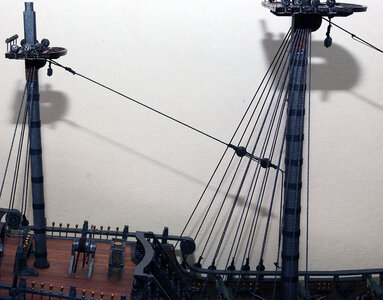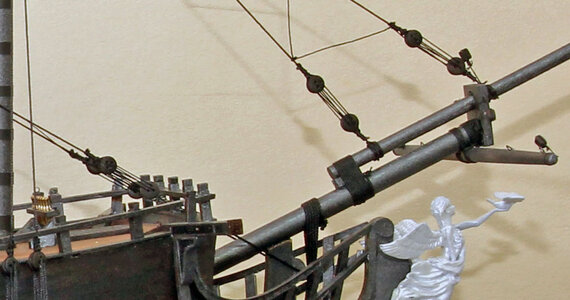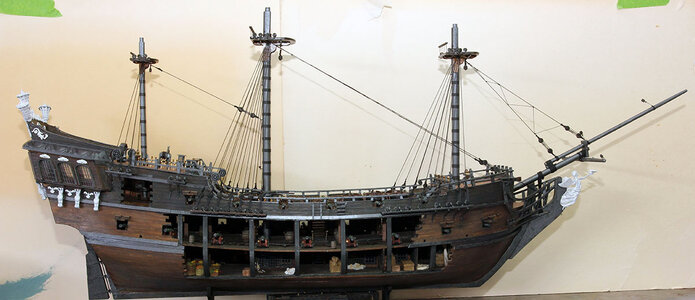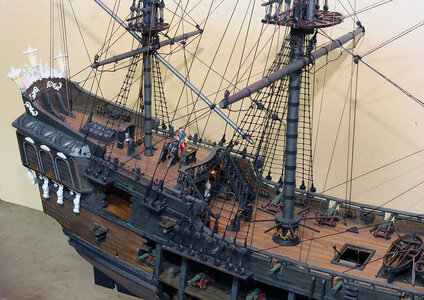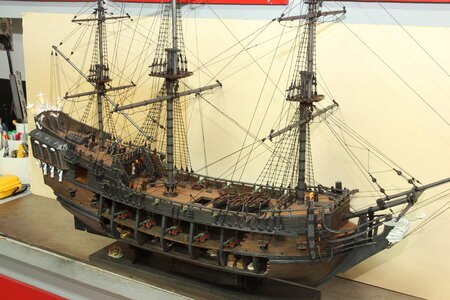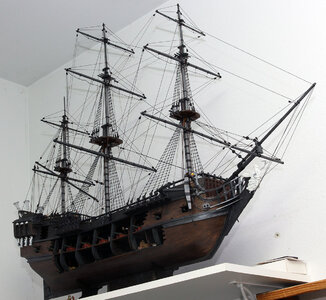Vic, I wouldn't specifically say I used the wire a lot with my trains but I often find uses around the house.
So I got home from my vacation on Friday all excited to try a new way of doing the deadeyes on the ship and after a couple hours of work I figured out that my plan wasn’t going to work. So I’m not going to talk about that experiment here as it would just confuse things. So on Saturday afternoon I decided to move forward with the kit parts. I epoxied the previously wired up deadeyes into the slots on the boards glued on the outer strips and let it dry. Then I tried using one of the provided nails to attach the brass strip to the side of the hull. When there was enough pressure to push the blunt end of the nail in it went in so hard I almost put a hole clear into the inside of the ship. At this point I decided to just glue the chain plates to the side of the ship and put the nails in later.
View attachment 252252
After touching up the paint, I decided to not bother with the nails. Even though the holes show up pretty well in a macro photo in person you can’t even see they aren’t there without really examining it so I may not put them in at all. Either way I can do it later if I want to. I need some real nails with a sharp tip, or to pre drill if I’m going to do it.
View attachment 252254
At any rate I decided to go ahead and go to work on the rigging. This is the item I most miserably failed at on my first couple of attempts. So I’m going to try and explain how I do the shrouds now. This is a method that I find to be acceptable. Once again this is not the correct way it’s how I do it. The correct way is a lot more work and the people that will see this ship as I mentioned earlier will never no the difference. This explanation is not as good as a video but might be of some help.
First I go ahead and tie one dead eye to the shroud line off the model. I do this as I showed using a block earlier in this build log. Secondly I take piano wire that will fit in the hole in the dead eye and make a C shape with it as shown below.
I read somewhere a long time ago that the distance between the deadeyes after they are rigged should allow the placement of 2 or 3 dead eyes in the middle. I bent the wire so that I had about 2 ½ dead eyes of space between the outer deadeyes. When you do this make sure you have the outer deadeyes oriented correctly.
View attachment 252253
Next I place the wire on the side of the ship with the tied dead eye as shown below. Notice the center holes in the dead eyes are the farthest apart.
View attachment 252255
Then I pull the shroud up over the top and the wire sets the distance for the deadeyes.
View attachment 252256
Now this is what I do wrong. I just wrap the line around the mast and go back down to the opposite side. When I do this I’m careful to neatly wrap each successive line to the rear of the previous one and place a drop of CA as I go along.
View attachment 252257
The reason is to space the shrouds evenly under the mast. If you just wrap them without doing this you end up with a wad of lines at the top instead of nice spacing. It doesn’t hurt anything it just doesn’t look as nice.
View attachment 252258
Next comes the hardest part of doing it this way. I then on the opposite side tie the opposite deadeye on. There are a couple ways to approach this. I start with the deadeye at about the location shown below and then slide it up and down Then I tie a square knot like I showed in the block tying earlier in the thread.
View attachment 252259
Once I have this at the length I want. I actually use my index finger and thumb to pull the shroud tight, and wrap the end of the line around it 4 times like I did in the jig earlier. Then hold the tail between my middle and ring finger as shown below and glue it with a drop of CA.
View attachment 252260
This does take quite a bit of finger dexterity to do but with a little practice it isn’t all that hard.
If that doesn’t work for you there are other things you can try. One is tying the line with the deadeye on the spacer wire. That is a bit of a trick with one wire because the dead eye wants to flip upside down. But you might find it easier than my method. If that is still too frustrating you can use two pieces of bent wire in the outer holes instead of the one in the center and the dead eye will not rotate. I’ve even seen where people have attached the two wires together to make a single part with two pins on each end. Check out
post #224 on @Tony H build to see a nice double wire solution.
Once tied on you should have a shroud with the spacer in place on each side of the ship.
View attachment 252261
One issue people have with the deadeyes, are the lines wanting to twist around after they are tied. There are several things I do to keep this from being a major issue. The first is as I mentioned before I always glue the lower deadeye so it can’t turn in the board. The second is I let the dead eye hang free before I start to tie it. This will take any twist out of the shroud line. And finally I make sure the line between the dead eyes isn’t twisted.
I take the smaller line and tie 2 knots in it. One, is often enough but two together gives a little insurance. I don’t know why this thread frayed it usually doesn’t.
View attachment 252262
Then the thread goes through from the back side on the upper eye, in the far left hole, and down to the lower far left hole.
View attachment 252263
Then the center top, center bottm, right top, and right bottom. Notice in the photo below this isn’t tied but still holds its shape. That shows there isn’t any weird stress on it.
View attachment 252264
Lastly I pull the tail straight up and tension the lines to where I like them. I then hold the tail on the back of the upper deadeye with the dead eye between my thumb and index finger. This holds everything tight. Finally I tie a knot on the top of the existing knot where you can see the tail coming from in the photo below.
View attachment 252265
I then put a drop of CA on the knot on the top and the knot on the back of the dead eye. Wait a minute and cut the tails off.
Here’s how it looks when I’m done. It’s not exactly the way it would be on a real ship but it’s adequate for me. It took me about 5 hours to do all of the shrouds for the lower ratlines.
View attachment 252266
I then used the same basic process to do the lower stays because I didn’t feel like tying rat lines. I embellished the foremast and mainmast stays by tying a smaller line between them. My constitution has the stays this way and I liked the way it looked. On the main mast the two lines are horizontal to each other and on the fore mast the lines are vertical to each other.
View attachment 252267
I also added a stay to the mizzen mast that is attached to eyelets I placed in the main mast.
View attachment 252268
Here’s a closer view of the dead eyes on the main and fore mast stays.
View attachment 252269
And here is an overall of the shrouds ready to start tying rat line. I still haven’t attached the upper mast portions because I tend to bang them into the cabinet over my work bench. Waiting to attach them will hopefully keep me from breaking them.
View attachment 252270
 so I spent a few minutes doing some things while I’m working on another dead eye project. Early in this thread I said I would give people an idea of how to do things with the basic tools when I did weird stuff. So this is going to be one of those posts.
so I spent a few minutes doing some things while I’m working on another dead eye project. Early in this thread I said I would give people an idea of how to do things with the basic tools when I did weird stuff. So this is going to be one of those posts.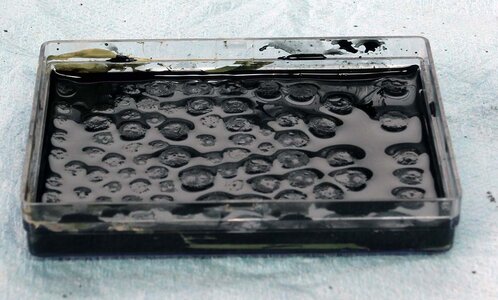
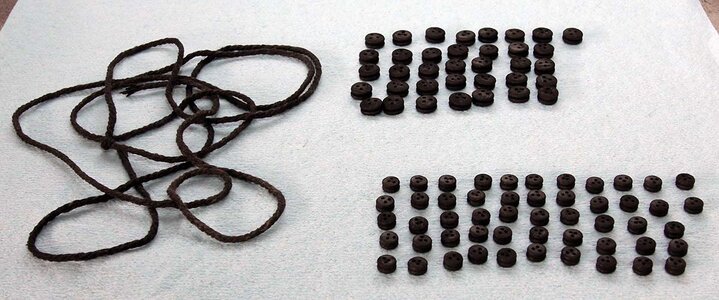
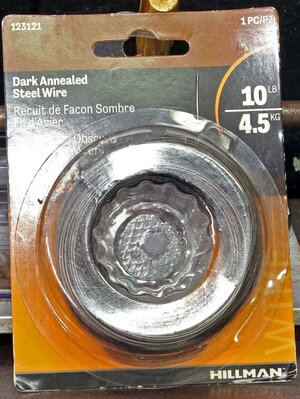
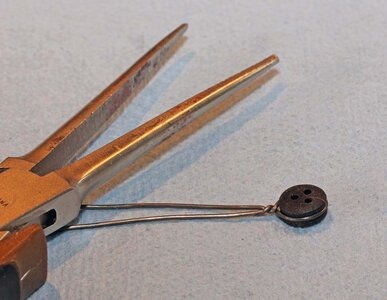
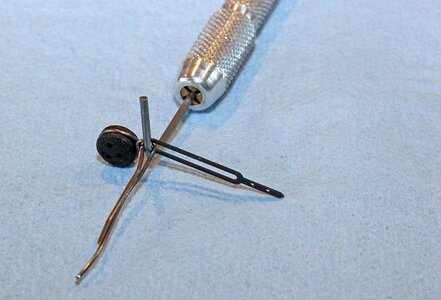
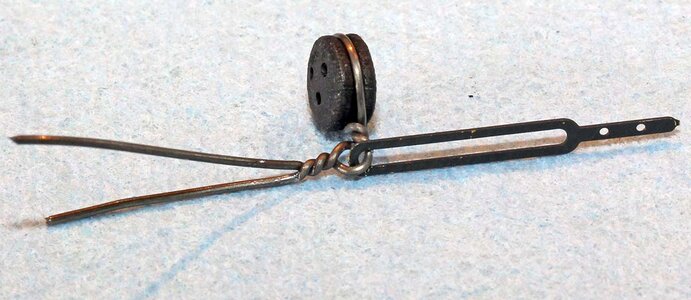
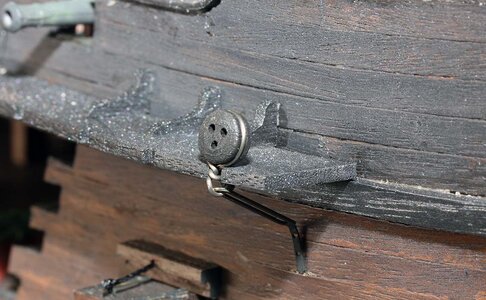
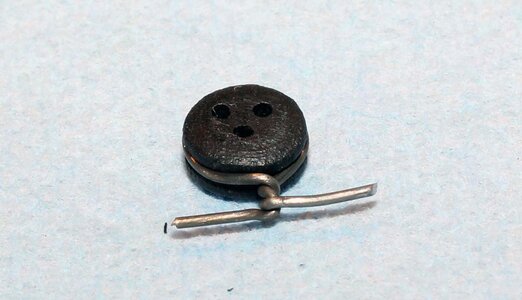
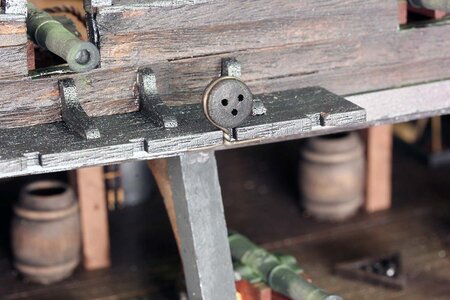
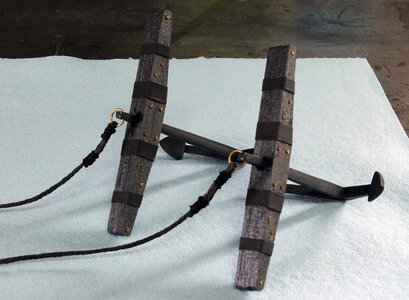




 .
.
